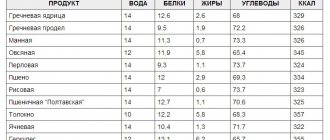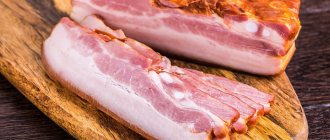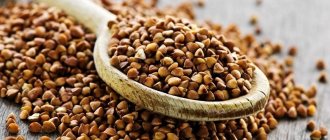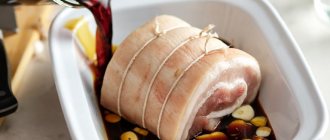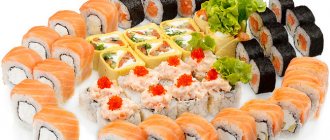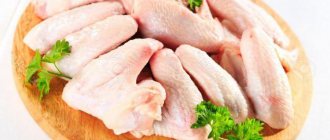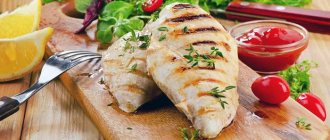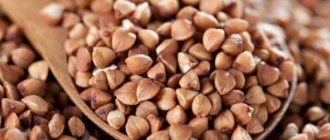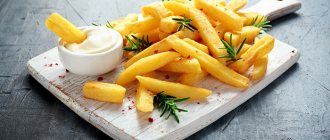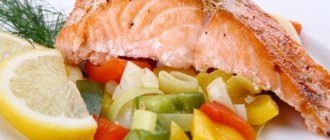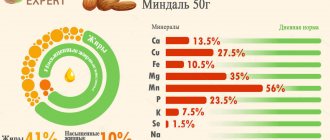This article is about how to count calories correctly and not make mistakes.
By eating by eye, we get results by eye.
Why can't you lose weight or can't gain weight? Do you think you eat like a sparrow when you're trying to lose extra pounds, or like a hungry wolf when you're trying to gain weight? If there is no result from the diet, then your estimate of calorie intake is incorrect. When asked, “How many calories do you get per day?” - you won't have an exact answer.
People tend to underestimate their intake when dieting and overestimate it when they want to gain weight. In this study, people's error in determining their caloric intake on a diet without calorie counting was 50%. Think about it!
Counting calories gives an objective picture of your diet. Yes, it is not 100% accurate, but this is not necessary. At least it is more accurate than by eye, palm, handful or glass.
Counting calories is easy, but there are some nuances. We'll talk about them. How not to make mistakes and take into account the really important details in order to manage your weight as accurately as possible.
It can be difficult at first because you may not be able to correctly count the correct amount of calories in foods right away. The calculation itself at the beginning of the journey will take a lot of time and search, and this can be annoying. After a few weeks of self-monitoring, you will become a pro at estimating the calorie content of foods.
What is needed for counting
People are divided into two types:
- Those who count calories
— And those who don’t count calories.
#1 – You can’t do without a kitchen scale
It is very difficult to judge by eye the weight of, for example, two pieces of meat of approximately the same size. A lean piece will weigh more than a sinewy piece with a bone. The difference can be twofold.
Let's not deceive ourselves or try to guess the weight. The accuracy of the kitchen scale weighing method will be the best way to determine the weight of food.
If you don’t have kitchen scales, you can order them on wildberries, amazon, aliexpress, mvideo, eldorado and other online stores. Read reviews and buy the model you like. This will be a good investment in your own health.
#2 – Calorie counting apps will make your life easier
Of course, you can write everything down in a notebook or constantly look at calorie tables, but apps will make the process easier and more interesting. More on this below.
#3 - Patience
Patience will also come in handy at first. Don't be discouraged if you find it difficult at first or if the counting takes a long time. At first we don’t like any unfamiliar task, then we get involved and begin to find our own thrill in it.
What you need to know
Nutrient Calories
You need to remember that the calorie content of foods consists of the calorie content of the macronutrients that make up them - these are proteins, fats, carbohydrates and fiber.
Table 1. Energy value of food macronutrients
| Amount of energy | |
| 1 g protein | 4 kcal |
| 1 g carbohydrates | 4 kcal |
| 1 g fat | 9 kcal |
| 1 g fiber | 1.5 kcal |
| 1 g alcohol (alcohol) | 7 kcal* |
*Please check the calorie content of a specific alcoholic product, as... it is an alcohol-containing solution.
In fact, these caloric values are average, but these numbers are enough to correctly estimate the energy intake.
Two apples from the same tree may have different caloric content and composition of proteins, fats, and carbohydrates. However, this difference can be neglected. No one will take their food to the laboratory to accurately find out the macro and micronutrient composition of food.
People have long used the method of counting calories for the purpose of gaining weight and losing weight. A large number of studies prove its effectiveness. You can easily count the caloric content of nutrients, as in the table above.
Dry and raw product
In what form should food be weighed - raw or cooked? Dry and cooked foods have the SAME calorie content, but DIFFERENT weight due to the water they contain.
When cooked, cereals take up water, increasing in volume; meat, on the contrary, releases water during heat treatment, decreasing in size.
For example, buckwheat absorbs water when cooked and increases in volume by about 3 times. Add 100 g of buckwheat, boil it and get 300 g.
The calorie content of buckwheat is 330 kcal per 100 g. After cooking, we get three times more product from water, which has zero calorie content. Thus, the calorie content of buckwheat cooked in water will be 110 kcal per 100 g.
Please be aware of this difference. If you boil a whole pan, then when weighing the portion, divide the calorie content by 3 to get the correct numbers.
The situation with meat is the opposite. Take a piece weighing 200 g and fry it in a frying pan. The meat shrinks, getting rid of water, and loses weight by almost 2 times. Let's assume that when baking we got 100 g of the dish.
The calorie content of lean pork is 250 kcal per 100 g. When baked, we will get the same calorie content, but already in 100 g.
Don't count the meat as it's cooked. Your fantasies about not getting enough protein are unfounded. Calculate the raw weight or multiply the weight of the finished product by 2, as in our example.
Don’t be lazy and weigh once the weight of dry cereals and the resulting porridge from it, as well as the weight of raw and cooked meat. Do this for each cooking method (cooking, frying, baking) you use to find out exactly how much the food is reduced or increased. Next, simply multiply or divide the weight of the finished dish by the resulting coefficient.
Another example - dry rice weighing 200 g boiled in water to 440 g (increased 2.2 times). To calculate the KBJU for an 80 g portion of boiled rice, I will divide the KBJU for dry rice by 2.2.
The calorie content of dry white rice is 344 kcal per 100 g. 100 g of boiled rice will contain 344/2.2 = 156 kcal. And in a serving of 80 g there will be 156 x 0.8 = 125 kcal.
Everyone cooks differently. The more water you add to the cereal, the more it will boil. The longer you cook pasta, the more water it absorbs. Therefore, everyone will have their own coefficients.
Nuances when weighing products
When weighing fruit, consider the weight of the peel. For example, in bananas it makes up a significant part - a third of the fruit; in pomegranate, the seeds and peel weigh more than half of the total mass. Fruits such as apples can be counted whole. The seeds and peel make up less than 10% of the fruit's weight.
We weigh chicken without bones, cottage cheese without packaging, eggs without shells, oranges without peel, etc.
With experience, you will understand what to consider and what not to consider.
About the system error
Even with a permanent error, such as not accounting for the raw/cooked meal difference, calorie counting will still work . If your weight does not change, you will simply adjust your caloric intake.
For example:
I want to gain more and I don’t know that when rice is cooked, it takes in water and swells 2.5 times. I eat a 120 g portion of rice every day, I count calories and BJU, as for rice weighing 120 g. But my weight does not change, and I think that I am overloading on carbohydrates.
In the example above, we already calculated the calorie content of dry white rice. It is equal to 344 kcal per 100 g. According to my calculations, I consumed 344 x 1.2 = 412 kcal.
In fact, I don’t have enough calories, because in reality I eat a portion not of 120 g of rice, but of 48 g of dry product and get 2.5 times less calories and nutritional value from such a portion.
412/2.5 = 165 kcal
I didn’t get 412 – 165 = 247 kcal because I didn’t take into account the change in calorie content when cooking rice.
But even if I don’t know about these features, but I know that I have to eat more than I spend in a day in order to gain weight, I will start eating more. Your calorie intake will increase and your weight will move off.
If you don't take something into account when counting calories, but know what energy balance , the method will still work.
The energy balance equation is the basis for changes in body weight. If we receive more energy from food than we spend per day, we increase our reserves (our weight). If there is not enough energy to cover expenses, reserves will be spent (weight will decrease)
All about proteins, fats and carbohydrates (BJU)
Proteins: features, benefits and harm
Protein is the most important nutritional component. Proteins are involved in many important functions in the body, including building muscle and tissue. Protein is found in foods such as meat, fish, cottage cheese, eggs, dairy products, legumes, soy, and protein shakes. In the stomach, protein foods are broken down into amino acids and then absorbed by the small intestine.
It is proteins that are the building material for the growth of muscle tissue, which means improving the quality of our body. It is especially important to consume protein foods during intense training. True, excessive protein consumption can cause problems with the kidneys and intestines. This is why it is so important to count BJU and monitor the balanced amount of protein in your diet.
The minimum daily amount of protein for an adult and healthy person is 0.75-1 g per kilogram of weight. The optimal daily amount of protein is 1.5-2 g per 1 kg of weight. If you are actively training, the protein norm can be up to 2.5-3 g of protein per 1 kg of weight.
Read more: ALL THE INFORMATION ABOUT PROTEINS
The main functions of proteins:
- They take part in metabolism and help break down food into molecules.
- They give shape to cells and act as the basis of intercellular substance and tissues.
- Provide detoxification by binding toxins with protein molecules.
- They increase the body’s protective function, in particular respond to inflammation and viral attacks.
- They affect the amount of substances in cells, blood, their reproduction and growth. For example, on insulin, which regulates glucose.
- They carry carbon dioxide to the lungs from tissues, and also transport oxygen from the lungs to other tissues.
- Provide muscle contraction.
What are the consequences of a lack of protein in the diet?
- Reduced muscle tissue, muscle sagging and loss of body tone
- Deterioration of the condition of the skin, nails, hair.
- Reduced absorption of nutrients and beneficial components.
- Hormonal imbalance.
- Deterioration of immunity and decrease in the body's protective functions.
- Deterioration of the function of the cardiovascular system.
- Decreased performance.
- The appearance of excess weight.
- Slowing down the processes of growth and development in children.
- Changes in the structure of the liver.
- The occurrence of memory problems.
What are the dangers of excess protein in the diet?
- Disturbances in the gastrointestinal tract and imbalance of intestinal microflora: flatulence, constipation or diarrhea, as well as pain in the epigastric region.
- Increased load on the kidneys, which can provoke a number of unpleasant diseases or aggravate existing ones.
- Chronic fatigue from the immune system, mood swings, increased irritability.
- Hormonal imbalance in women and menstrual irregularities.
- Bad breath.
Moderation is important in everything. Excess protein in the body also has a number of negative consequences for the body, so it is not recommended to practice protein diets. If you want to lose weight, switch to a properly balanced diet or keep a count of KBJU (more on that below). You should not choose diets that imply an imbalance of some set of important elements.
Carbohydrates: features, benefits and harm
Carbohydrates are the main source of energy for the body. Carbohydrates are formed, as a rule, from starch and sugars, and also in smaller quantities from polyols and fiber.
There are simple and complex carbohydrates. Complex carbohydrates can be found in cereals, vegetables and unsweetened fruits. Simple carbohydrates are found in sweets, flour products, sweet fruits, dried fruits, and refined foods. If you want to switch to proper nutrition, then train yourself to eat cereals: oatmeal, buckwheat, barley, pearl barley, millet. They are a source of complex carbohydrates that provide long-lasting satiety and do not provoke hunger.
The carbohydrate intake rate is 40-50% of the daily calorie intake. The basis of your menu should be complex carbohydrates; allocate no more than 10% of your daily calorie intake to simple carbohydrates. For example, if your daily intake is 1500 kcal, then simple carbohydrates should account for 150 kcal (for example, 25 g of milk chocolate or 10 prunes).
Read more: SIMPLE AND COMPLEX CARBOHYDRATES.
The main functions of carbohydrates:
- Provides about half of the body's daily energy consumption.
- They take part in the “construction” of cell membranes and some enzymes. Carbohydrates are also included in bone and cartilage tissue and polysaccharides.
- They act as anticoagulants and prevent blood clotting. They have antitumor properties.
- They form an energy reserve that accumulates in the liver, skeletal muscles, heart and other tissues. Glycogen saturates the entire body with glucose.
- Carbohydrates improve digestive function by facilitating the absorption of nutrients.
What are the consequences of a lack of carbohydrates in the diet?
- The load on the kidneys increases as a result of impaired salt metabolism.
- A constant shortage also causes “acidification” of the gastrointestinal tract, which leads to the burning of fats and proteins.
- Poisoning of brain cells may occur.
- Metabolism is disrupted.
- Lethargy and lack of energy.
- Fats are deposited in the structure of the liver.
An excess of carbohydrates, especially an excess of simple carbohydrates, is no less dangerous. Excessive amounts of organic matter can lead to various negative consequences.
What are the dangers of excess carbohydrates in the diet:
- Increased risk of developing diabetes.
- Excess weight and increased risk of obesity.
- Constant feeling of hunger.
- Peeling of the skin, as well as the appearance of acne.
- Decreased cognitive function.
With the correct balance of fats, proteins and carbohydrates, appetite occurs no earlier than three hours after eating. If, a short time after eating, you feel hungry again, you need to reduce the amount of simple carbohydrates, add proteins, fiber and fats to your diet, which will ensure satiety for a long time.
Fats: features, benefits and harm
Fat is one of the most important components of a living cell. This is a source of vitality and energy that helps to survive difficult periods. There are two large categories of lipids - vegetable oils and animal fats, which in turn are divided into complex and simple.
Products containing large amounts of fat are classified as high-calorie foods. This is easy to explain, because 1 gram of fat = 9 calories, while 1 gram of carbohydrates and 1 gram of protein contain only 4 calories. In this regard, many people, when going on a diet, switch to low-fat foods. However, few people know that a lack of fat in the body can lead to numerous disorders in the body, which is why it is very important to count BJU in order to control the supply of nutrients.
The norm of fat is from 0.7 to 2 g per 1 kilogram of body weight. People diagnosed with obesity need to consume 0.7 to 0.8 grams of fat. If your weight is within normal limits, the average daily fat intake is 1 g. Regardless of your individual BJU calculations, the minimum amount of fat per day should be at least 30 g.
The main functions of fats:
- Fats create a huge influx of energy that cannot be achieved with carbohydrates and proteins alone. When there is a severe energy deficit, the body begins to break down muscles and tissue.
- Absorption of vitamins is impossible without fats. The absorption of organic substances such as A, C, E and K occurs exclusively in the presence of fat.
- Fats also help reduce appetite, so any diet should include small amounts of fat to control appetite and maintain performance.
- Fat is its own insulation system that prevents freezing. It performs a protective function for bones from impacts and provides support for internal organs.
- Fat provides texture and flavor to food, which is why fried and fatty foods always taste better.
- Substances of animal and plant origin provide insulation of fibers and facilitate the passage of nerve impulses that come from the brain. Fats stimulate the motor function of the body.
- Fats are responsible for transporting nutritional components in the body and participate in the construction of necessary elements in the body. With their help, protective functions are also supported.
What are the dangers of a lack of fat in the diet?
- Itching and increased dryness of the skin.
- Mental disorders, aggressiveness and impulsiveness.
- Fatigue in the morning, problems concentrating, memory impairment.
- Constant feeling of cold.
- Visual impairment.
- Hormonal disorders.
- The appearance of pain in the joints.
What are the dangers of excess fat in the diet?
- Dysfunction of the gastrointestinal tract.
- Deterioration in the absorption of beneficial macroelements.
- Increased need for vitamins.
- Increase in body weight.
- Increased risk of developing diabetes mellitus and cholelithiasis.
- Increased risk of developing vascular disease and atherosclerosis.
Arguments of opponents of calorie counting
The stated calorie content on the labels does not correspond to reality.
Because of this, it is argued that it is impossible to accurately determine how many kcal we consume.
Food manufacturers indicate the average calorie content of their products on packages, so there is an error. In restaurants, the chef doesn't care about your figure. The caloric content of the dishes is indicated approximately.
There is a decree of the Government of the Russian Federation dated August 15, 1997 N 1036 on the provision of reliable information on the nutritional value of public catering products (link to document). This resolution obliges providers in the field of catering services to provide accurate information about calorie content, dietary supplements, vitamins and minerals in their products.
In fast food restaurants KFC, Burger King, Subway and McDonald's, information about the calorie content of menu items can be found on their website.
Despite all these inaccuracies, you can safely take information about the calorie content of products from the labels; we still have no other choice) Even if some product is constantly present in your diet and because of it you cannot lose weight, because the manufacturer has underestimated the calorie content , you can simply create a larger daily caloric deficit or increase your calorie expenditure by increasing your activity.
Not all calories are absorbed
The degree of digestion of foods affects the number of calories received.
A healthy person learns:
- Animal protein is approximately 90-95%, vegetable protein is 80-85%.
- Fats at 95-97%.
- Food rich in carbohydrates is 80-95%, depending on its fiber content.
I believe that there is no need to worry about these values. What is important to us is not exact numbers, but the relationship between the calories we count and the dynamics of weight change. If we are missing something, we can make adjustments to the overall caloric intake.
I will even say more - we all digest foods differently. But this should not worry us. Everyone counts their calories and they WILL work for your weight loss or weight gain. Did you miss something when losing weight? Never mind, just cut off another 10% of calories and continue to ignore some factor.
Despite all the errors, these figures are enough to create a diet for weight loss or weight gain.
What does caloric content depend on?
The calorie content of food directly depends on the type of food processing.
For example, if you take a raw chicken breast and throw it in the fryer, you will increase the calories by 50-60% from the fat.
The body will have to work less hard to absorb nutrients from processed foods. He will have to work harder with the raw one.
- frying in oil . It has been proven that frying increases the calorie content of foods. Even ingredients that absorb very little oil gain 50% more calories when deep-fried;
- cooking. According to research, cooking does not change the calorie content of food, but affects the content of microelements and vitamins.
Equally important is not only the content of the calories and nutrients themselves, but also the body’s ability to digest and absorb these calories and nutrients. The intestinal microbiota is responsible for this.
Thus, a person with normal intestinal microflora will receive more nutrients from the same amount of food than a person with dysbiosis.
Let's move on to how calorie intake affects your body.
Errors when counting calories
We don’t take into account everything that goes into the mouth or about “invisible” calories
We count everything, absolutely everything we put into our mouths, except water.
If you finish eating after your younger brother or child, consider the calories. Fry meat in oil - consider the calorie content of the oil. If you add healthy olive oil to your salad, don’t forget about the 900 kcal contained in 100 g of this oil.
Even 100 kcal not taken into account per day will result in 3000 kcal on top in a month. This is the answer to why we gain excess weight if we don't control what we eat.
Watch Boris Tsatsouline’s video about how we are mistaken about the size of food portions and determining their calorie content:
Harmless fruit drinks and homemade compotes can provide an additional 200-300 kcal per day.
Do you drink tea with sugar? Sugar has a calorie content of 398 kcal per 100 g, 32 kcal in a teaspoon. Don't forget to take this into account! 3-4 mugs of tea with sugar per day will give 120 kcal on top.
Do you drink cappuccino? 2/3 of the drink is milk, with a calorie content of 64 kcal per 100 ml. So, one 150 ml serving contains 100 ml of milk. 3 glasses of coffee per day will provide 190 additional kcal.
These are the same “invisible” calories)))
Of course, vegetables such as spinach, cabbage, peppers, tomatoes and zucchini are so low in calories that there is usually no point in counting them at all. It is almost impossible to create a calorie surplus by overeating, say, spinach. These are all non-starchy foods.
At first, I recommend counting everything except water, mainly to estimate the calorie content of the foods you eat on a regular basis. Next, you can ignore non-starchy foods.
Due to fiber and water, vegetables fill us up very well. But don’t forget about what you use them with, say, butter, mayonnaise, sauces, etc. - these things need to be counted!
We count starchy vegetables and fruits. These are potatoes, beets, bananas, watermelon (this is a berry), grapes.
Starchy and non-starchy carbohydrates
There is another category of invisible calories - these are super healthy foods such as fish oil, olive, flaxseed and other oils. If you gain the norm of Omega-3, 6 fatty acids by eating a tablespoon of healthy oil in the morning, you get 135 kcal per 15 ml. For weight loss, this is critical if you are on the borderline caloric value.
We use standard recipes from apps
Everyone cooks differently. Your soup may be different from what a popular fitness blogger made. Your recipe may contain more or less calories. However, even here everything may not be so bad. If you eat the dish constantly, then the error will be visible in the absence of a weight change result. Adjust your calories and move on.
Still, it is better when you are preparing some complex dish consisting of several ingredients, for example, soup, cake, casserole, pizza, not to look for its calorie content in applications or tables. Before cooking, weigh each ingredient, calculate their energy value and BJU, and add up the resulting numbers. The result will be more accurate.
Let's calculate the calorie content of homemade Olivier, as the guys from Lifehacker did (https://lifehacker.ru/podschyot-kalorij). Take 300 g of boiled potatoes and doctor's sausage, 120 g of mayonnaise, 200 g of canned green peas, 150 g of pickles and 275 g of boiled eggs.
The mass of the dish is 1345 g; the rest of the numbers on the plate are:
| Ingredient | Quantity, g | Energy value, kcal | Proteins, g | Fats, g | Carbohydrates, g |
| Boiled potatoes | 300 | 246 | 6 | 1,2 | 50,1 |
| Doctor's sausage | 300 | 771 | 78,4 | 66,6 | 4,5 |
| Mayonnaise | 120 | 748 | 3,72 | 80,4 | 3,1 |
| Green pea | 200 | 104 | 9,6 | 0,4 | 15 |
| Salted cucumbers | 150 | 16,5 | 1,2 | 0,15 | 2,55 |
| Eggs | 275 | 431,7 | 34,9 | 30 | 1,92 |
| Total: | 1345 | 2318 | 93,8 | 178,7 | 77,19 |
You can enter a dish into a calorie counting app and then simply enter the serving size. The application itself will show the KBJU. It's free and easy.
You can count calories and nutritional supplements in a notebook, but apps save your time and make your life easier.
Breakfast
When we are too lazy to cook in the morning, we limit ourselves to a sandwich with butter, cheese or sausage, as well as pastries. Look at it this way: One tiny banana nut muffin has a whopping 530 calories and 23 grams of fat ! For your own health and slim figure, it is better to prepare a full breakfast consisting of a soft-boiled egg, fresh strawberries with low-fat yogurt, English scones and a cup of coffee with skim milk. 100 calories and 12 grams less fat!
The first option contains muesli, low-fat yogurt, strawberries, banana and honey. Total: 809 calories, 26 g fat. It may seem strange, but second breakfast is lower in calories: low-fat yogurt, strawberries and blueberries (instead of bananas), French toast, maple syrup, some bacon, a cup of coffee. Total: 575 calories, 18 g fat.
Applications and programs for counting calories
I will focus on the two most popular ones - MyFitnessPal and Fatsecret. They are in Russian, you can download them for free using the links below.
MyFitnessPal is a great app. Don't be afraid to poke around and check everything. It has a lot of useful functions and interesting things.
Visual macro in the MyFitnessPal application
To track the dynamics of results, MyFitnessPal has weight and girth indicators. For greater clarity, you can make photo reports and indicate your weight in the photo. The graph displays the dynamics when you enter data into the application for at least a week
Macro in Fatsecret
Fatsecret also shows visual dynamics of weight changes in the form of a graph
During registration, any application will ask you to enter your data - height, weight, activity level and goals (weight gain, weight loss or maintenance) and calculate your daily calorie intake. The numbers will be approximate. How to calculate all the necessary calories for weight loss most accurately, I tell you in detail in my article on losing weight.
The programs will replace your food diary in a notebook (although you can keep one) and calorie tables, save time and make the counting process visual and interesting. Graphs and tablets will delight people who love to count and analyze everything.
When choosing food you can:
- Use ready-made dishes entered into the database by other users;
- Enter foods and dishes that you eat frequently manually once and then enter only the serving size. This is necessary for greater accuracy. You don’t take dishes that are in the database and are similar to your calorie content and nutritional value, you enter exact values;
- Create a new dish;
- Use a barcode scanner, and if the product is in the database, the application will display all the information about it. If a product is not in the database, it is easy to add it by indicating KBJU.
When adding a dish to MyFitnessPal, the serving size is selected based on 100g, but you can simply enter the weight of the dish. Everything is very flexible.
With applications, “sports interest” appears. Your transformation process can be visible to other users if you so choose. You can see what kind of diet your friend has and how many calories he consumes. This is great and interesting!
How to count calories without scales
If you don’t have a kitchen scale for one reason or another, you can count calories using your hands.
Whites = palm
Choose high-protein foods such as meat, fish, eggs and dairy products, beans. Your palm will be a measure of the protein portion per meal (list of foods rich in proteins).
One serving of protein for men
One serving of protein for women
Fat = thumb
Make a diet of high-quality fats of plant and animal origin, for example, vegetable oils, nut butters, nuts, avocados, lard (more about healthy fats). Thumb is a measure of one serving of fat per meal.
Single portion of fat for men
Single serving of fat for women
Carbohydrates = handful
Cup your palms and get one serving of carbohydrates. Carbohydrate foods can be different, but it is important that they satiate you well, for example, fruits, grains and cereal products, buckwheat (read more about carbohydrate foods on a diet).
One serving of carbohydrates for men
One serving of carbohydrates for women
Vegetables = fist
The size of your fist will be the serving of vegetables in your meal. Choose non-starchy vegetables such as tomatoes, cucumbers, greens, lettuce, broccoli, spinach, carrots, cabbage.
One serving of vegetables for men
Single serving of vegetables for women
The above photos show one meal for men and women. For both sexes, 4 such meals per day are needed to maintain weight. To lose weight, remove one finger of fat or one palm of carbohydrates from any food.
This form of meal planning is a starting point, just like counting calories on a scale. Stay flexible and adjust your portions based on your hunger and your weight loss results.
Purpose of energy in the body
But heat is only a by-product. Eating food produces energy after the elements it contains are oxidized. Metabolic processes use this energy for a variety of purposes:
- physical activity;
- work of organs and systems;
- tissue restoration.
And this is just a general list of activities for which the body needs calories.
Caloric nutrition is designed to supply the body with the required amount of energy. If there is more of it than is spent on current needs, the body will gain reserves in the form of fat or muscle (depending on what you eat). If it is less, the body will begin to use previously accumulated reserves, losing weight.
Keep life easy
Please don't become obsessed with counting calories. It's just a way to control nutrition. If you can’t weigh something, buy the product already weighed and with information on the label about KZHBU. If you can’t count something, for example, at a barbecue picnic or a party with friends, eat by eye.
The main thing is not to create a cult of life out of calorie counting. Calorie counting needs to serve for a happy life and be conveniently integrated into your lifestyle.
Over time, you can stop counting calories, because you will become a mega-professional in assessing your diet and will be able to stay on the maintenance calorie level by eye)))
